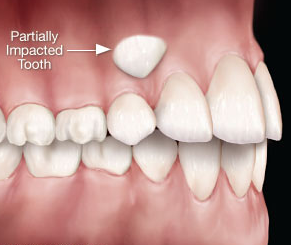When we lose a tooth there may be the temptation to think
that there are few, if any, serious consequences to follow. We think, sure a
missing tooth is not aesthetically pleasing and our smiles have now been diminished,
but there are more consequences than just the aesthetics of it. Unfortunately,
this is not true as losing a tooth causes a domino effect on the rest of our
periodontal health. These are some of the most common consequences of tooth
loss:
1.
Your Teeth
Move – When you lose a tooth, adjacent teeth are not held in place as well
as before. The consequence is that they shift position tipping or rotating into
the void. This affects your biting ability and causes what is known as a
malocclusion. This malocclusion puts strain on your jaw joints causing pain.
2.
Bone loss
– The bone in your jaw needs simulation in order to remain dense and healthy.
The teeth provide ample stimulation on their own since stresses exerted on the
teeth are transmitted to the bone via the periodontal ligament. However tooth
loss causes the loss of simulation and subsequently the loss of bone. Bone loss
can impact your appearance severely, collapsing your face and altering your
facial features.
Weakening of teeth – Your molars and premolars were designed to chew the bulk of your food. Losing teeth on one side of your mouth makes you favor the other side which puts more strain on your teeth. This increases the chances of broken teeth and loss of fillings. Additionally, you tend to put more pressure on your incisors. Incisors were not meant for heavy duty use and they often shift and weaken.
Losing teeth comes with a number of surprising and unwelcome consequences. The good news is that they can be avoided. Good and consistent oral hygiene as well as regular visits to your dentist can go a long way in preventing tooth loss and its myriad of complications. Even more welcome is the news that dental implants help to halt bone loss and stimulate new bone growth. Contact one of our periodontists today to find out how you can prevent the consequences of tooth loss.






